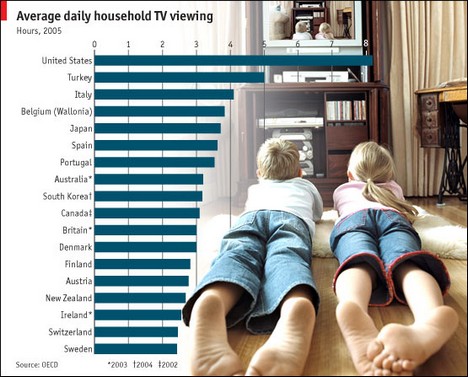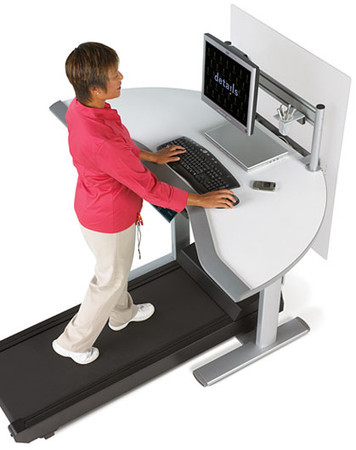On Wednesday, the American Heart Association (AHA) sponsored National Walk to Work Day to encourage sedentary workers to unhitch themselves from their desks and get their heart pumping by walking at least a half hour of their day, whether it was part of their commute, during their lunch hour or after the work day. Yet the health benefits of walking extend long beyond April 4.
The results of recent studies are increasingly emphasizing the importance of making walks an ongoing part of one’s daily routine. An Australian study reported this week in the Archives of Internal Medicine reports that spending too much time sedentary, whether laboring at the computer or lounging in front of the television, may increase one’s risk of early death.
Researchers looked at death rates of more than 200,000 adults age 45 and older during a three-year period. They found that adults who sit a minimum of 11 hours per day are 40 percent more likely to die prematurely than those who sat less than four hours per day. Prolonged sitting remained an increased risk regardless of one’s weight or time spent exercising.
Hidde van der Ploeg, lead author of the study from the University of Sydney, told Retuters Health that extended sitting may have a negative affect on blood vessels and metabolism, causing an increase fats in the blood and lowering “good” cholesterol levels.
“When you are standing or walking your leg muscles are constantly working, which helps to clear blood glucose and blood fats from the blood stream,” he said in Reuters. “If you are sitting this is not happening because the muscles are not active.”
He recommended implementing movement throughout the workday, regularly standing and stretching, walking around and keeping properly hydrated so that one must take multiple walks to the bathroom. He even suggested holding meetings and talking on the phone while standing.
Closer to home, scientists have also discovered that a sedentary lifestyle also has an impact on one’s genetic tendency for obesity. Qibin Qi, Ph.D., study author and a post doctorate research fellow in the Department of Nutrition at Harvard School of Public Health said in a statement that researchers observed that a sedentary lifestyle, measured by watching four or more hours of television per day, “increased the genetic influence [of obesity] by 50 percent.”
The average American watches television about four to six hours a day, he said. Taking a break from the tube now and then for a fast-paced walk, however, seems to reduce the negative health effects to the waistline.
“In our study, a brisk one-hour daily walk reduced the genetic influence towards obesity, measured by differences in BMI by half,” Qi said.
 From thousands of male and female participants in the Nurses’ Health Study and Health Professionals Follow-up Study, Qi and colleagues collected data on physical activity and time spent watching TV two years before a Body Mass Index (BMI) was measured. The BMI is a ratio of height and weight that measures body fat. A BMI of 30 or above is obese.
From thousands of male and female participants in the Nurses’ Health Study and Health Professionals Follow-up Study, Qi and colleagues collected data on physical activity and time spent watching TV two years before a Body Mass Index (BMI) was measured. The BMI is a ratio of height and weight that measures body fat. A BMI of 30 or above is obese.
Each subject was also scored on their genetic predisposition toward obesity based on 32 established BMI-predisposing genetic variants. Each BMI-increasing gene was associated with 0.13 kilograms per meter squared in BMI. Those who exercised the most lowered their BMI to 0.08, compared to the least active at 0.15 kilograms per meter squared.
In those who make television watching a full-time job at 40 hours per week, researchers found an increased effect of an obesity gene to 0.34 kilograms per meter squared.
Previous studies have also shown how exercise can combat obesity genes. As reported in TIME magazine last November, research published in the journal PLoS Medicine last year showed that merely 30 minutes of exercise, from walking the dog to gardening to biking, for five days of the week could counteract one’s risk for adult obesity. In people with a fat mass and obesity, or FTO, associated gene, exercise reduced risk of obesity by 27 percent.
Last month, the Centers for Disease Control and Prevention (CDC) also released a report linking inactivity to rise in cancer rates. According to Sci-Tech Today, the authors of report said that maintaining a healthy weight and getting adequate exercise may be the most important factors to cancer prevention and for the prognosis for those diagnosed with cancer.
According to the AHA, one’s life expectancy may increase by two hours for every hour of walking.
Click here for tips on how to successfully incorporate physical activity into your daily routine.


[…] your waistline? Studies have shown that walking just 30 minutes five days out of the week has also been found to counter a genetic propensi…. Walking may also reduce the risk of early mortality that comes with a sedentary […]